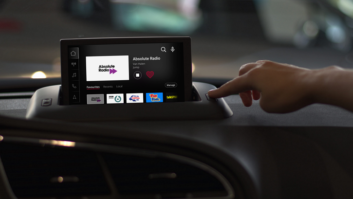Every engineer has recurring needs for small electronic parts from time to time, as well as an occasional urgent need for parts to get you back on the air.
John Petter works for Clarke Broadcasting in Sonora, Calif. He writes that they are fortunate to have a Radio Shack store in their small community, but it doesn’t always have what is needed. To help fill the gap, John established open accounts with Mouser Electronics and Digi-Key.
Ordering online from either company is a snap. You provide “profile” information once; from then on, it’s basically “click and go.” Credit card orders are just as easy. They e-mail confirmation and tracking info, which is handy; and their Web sites seem to always know stock status.
Admittedly, it can be difficult to wade through one of their big catalogues (online is slower, in John’s opinion) to locate the part you want. Another source that John adds is Newark Electronics, which recently sent a mailer specifically aimed at broadcast technical types. Their prices are just as competitive.
Any companies you recommend? The key here is to have an established account, so when you need something, the order is just a phone call – or click or two – away.
. . .
Fig. 1 shows a slick way to counteract the high cost of thermal paper used in most EAS encoder/decoders.
(click thumbnail)Fig. 1: Here’s a slick way to counteract the cost of thermal paper used in most EAS encoder/decoders.
Lamar Smith, the market engineer for Scranton’s Entercom stations, inherited the modification to the printer modules of his EAS boxes. A former engineer punched and bent the metal bracket that was fastened to the front of the EAS unit. A plastic dowel holds the thermal paper roll.
This modification offers several advantages. First, less expensive rolls of thermal paper can be purchased from an office supply store like Staples or Office Depot, in bulk supply. In addition to a lower overall cost, these rolls are larger in diameter than the ones supplied by the manufacturer, meaning your paper supply lasts longer.
The only drawback to using the store-bought paper is its width. The printers used in most of the EAS boxes have a narrower width than the standard “cash register” or “adding machine” thermal paper rolls.
(click thumbnail)Fig. 2: You might get a little blackening when you trim your EAS paper with a band saw; but no harm done.
The solution is as simple as a band saw. You can pare the width of the rolls quickly to the proper measurement using a band saw. The heat from this trimming process causes the black band along the right edge of the paper, as seen in Fig. 2. There is ample margin, however, that this blackening of the thermal paper doesn’t interfere with the area used for the printed messaged text.
To get the paper into the printer feeder, the faceplate is spaced away from the front panel with two small pieces of double-stick tape. The tape has the protective cover left in place on the side facing the EAS box, so the cover panel can be removed easily. I suppose washers could be used on the thumb nuts to achieve the same spacing, but washers can fall out and get lost. The tape seems to work better.
The two strips of tape are affixed to the left and right edges of the faceplate. This spacing permits the thermal paper to pass through the bottom of the faceplate and into the printer, and prevents drilling or cutting a slot into the unit.
The time and cost of the modification are minimal, and for a group of several stations with multiple EAS boxes, the savings can be substantial.
Lamar Smith can be reached at [email protected].


. . .
This is the time of year that lines and antennas burn up because there is no pressure on the system. Let Fig. 3 be a reminder to check your nitrogen tanks or dehydrators regularly; if the system is leaking, get it fixed, pronto! If you suspect water in your line, it must be drained.
(click thumbnail)Fig. 3: Check your nitrogen tanks or dehydrators regularly; if the system is leaking, get it fixed.
Consider this scenario: the VSWR is rising on this FM station, where the line has been left unpressurized for several months. When the engineer unfastens the elbow at the building entry point, only a few drops of moisture are noted. The connection is wiped clean and reassembled. High VSWR is noted again as the transmitter power is applied.
Suspecting the antenna, the engineer brings in a tower rigger. The antenna checks out fine, but just for grins, the rigger asks the engineer to take apart the elbow assembly at the building entry point. When it’s apart and the coax cable going up to the antenna is open at ground level, the rigger disconnects the antenna from the coax. With a whoosh, a bucket full of water douses the engineer!
What happened?
As kids, many of us played a game in which we held a thumb over the end of a soda straw sticking out of a glass of water. You could lift the straw, and the vacuum caused by the thumb kept the water inside the straw. When you removed your thumb and released the vacuum, the water poured out – hopefully into your mouth.
The same principle applies. If the leak occurred near the bottom of the line, and the top end connector is sealed, not much water will be released until that upper connector is removed. This problem is common with long twisting runs of line coming off a tower and going into the transmitter building. Low spots, causing the cable to sag, are prone to collecting water when a system is left unpressurized. Keep a watch out for moisture-related problems, and correct any problems.
Phartronics Engineering has a slick device that monitors your line pressure and gives you a DC voltage that can be fed into a remote control system. The PSI-V3 Pressure Sensor Interface is inserted at the gas port or manifold and converts line pressure into a linear voltage. For around $200, this device is cheap insurance.
More information can be obtained from your broadcast equipment distributor or online at www.tekwav.com/phartronics.
Submissions for this column are encouraged, and qualify for SBE recertification credit.








